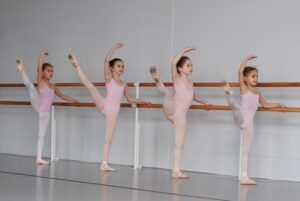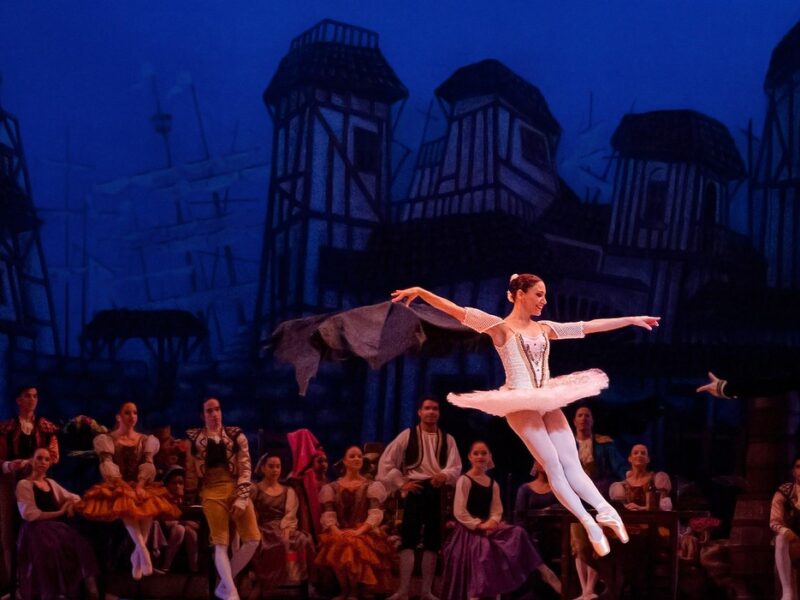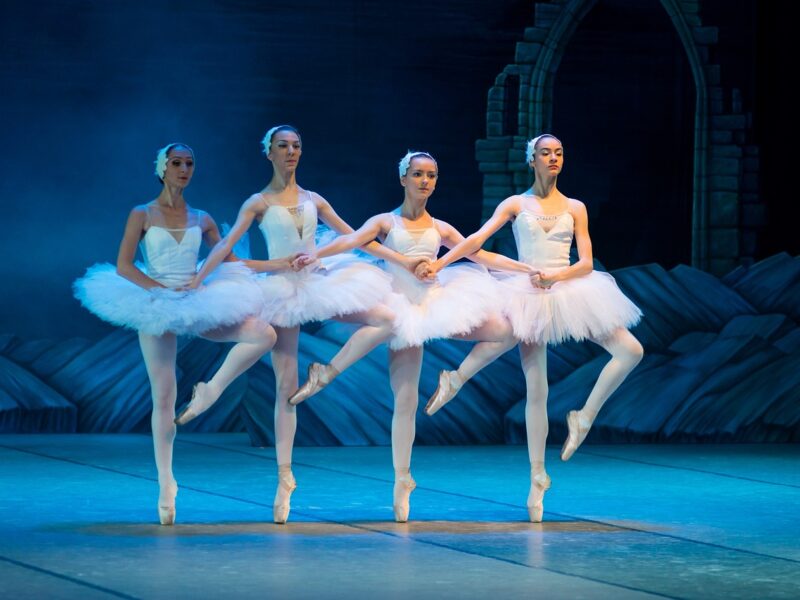Okay dancers, it’s question time! I want you to ask yourself which muscle you think is predominantly used when we développé à la seconde???
Time’s up!!! If you said the quads, thighs or legs, then I’m afraid that you’re wrong! In fact, if you are someone who thought that we use our quads to get our legs up during side extensions, then I’m going to make a guess that you’re struggling with the height of your développé, or may even be finding it difficult to get your legs above 90⁰? If so, you’re probably quad gripping in your extensions, which means that instead of using the right muscles to lift the leg, we use our quads instead!
But what are the ‘right muscles’, and how can we engage them during our side leg extensions to improve the height of our développé à la seconde?
Although we do engage our quads to straighten and extend our working leg at the very end of our développé, it’s a muscle called the iliopsoas that is majorly responsible for getting our legs up in the air during extensions. You may not have heard of the iliopsoas before, but I can almost guarantee that you’ll be familiar with its alias… the hip flexor!
The hip flexor (or iliopsoas) is responsible for hip flexion, which is the movement of our legs above 90⁰. This means that if you have tight or weak hip flexors, you may be really struggling to achieve height in your side leg extensions. A lot of dancers struggle with weak hip flexors, mainly because they don’t know what the hip flexors are, or they’re unsure of the benefits that come from stretching and strengthening them.
It’s really important that as dancers we learn how to activate, strengthen and engage the right muscles during our leg extensions, as doing so will not only improve our technique, but will also help to prevent injury!
Ready to get started? Keep reading to learn how to improve your développé à a seconde to achieve the leg extensions of your dreams…

Exercise #1 – à la seconde knee pulses
The first exercise on our list is a great one for strengthening the hip flexor in the à la seconde position through the 90⁰ range of motion. It also mimics the middle section of our leg extension (the part where we lift our leg to attitude from a retiré position), which if done properly by keeping our hips square and legs turned out, will really help to prepare the iliopsoas for execution of full développé à la seconde.
Step 1 – Face the barre in first position
Step 2 – Holding the barre for stability, retiré the left leg
Step 3 – From a retiré position, engage the iliopsoas and lift the left knee into attitude à la seconde. Imagine that you are going to développé but do not extend the leg
Step 4 – Lower the left knee back to the retiré position and repeat
Exercise #2 – hip flexor march
The hip flexor march is another fabulous exercise for activating and strengthening the iliopsoas to improve the height of your side leg extensions. Learning how to activate or ‘turn on’ our muscles is crucial for dancers, and visualisation can really help with this.
When we perform hip flexion (or lift the knee above 90⁰) our hip flexors contract. To get the best results out of this muscle activation exercise, I want you to try placing you fingers over your iliopsoas, and imagine the muscle contracting alongside your core every time you lift your knee.
If you work on creating this strong mind-to-body connection during your cross-training exercises, your ballet technique can really benefit! For example, if you imagine that your leg is SUPER heavy, I bet you’ll find it a lot harder to lift during extensions.
This means that to achieve the highest possible développé à la seconde, you should visualise the hip flexors contracting when you lift the knee to evoke a sense of ease and strength through the motion.
Step 1 – stand sideways to the barre and wrap a looped resistance band around your feet
Step 2 – holding the barre for support, lift your left knee as high as possible keeping the leg bent in a marching position
Step 3 – Lower the leg and repeat on the other side
Exercise #3 – assisted développé à la seconde
Now this one is tough, so please don’t feel deflated if you struggle to get your leg off the barre when you try this exercise! Once again, we’re going to work on strengthening the hip flexors, however this time we’re going to challenge ourselves with a straight-leg exercise.
Okay dancers, it’s time to put away the pointe shoes and channel our physics brains…
Let’s imagine that I’ve just given you two dumbbells of the same weight. The first dumbbell you must hold with your arm fully bent into your torso, and the second dumbbell you must hold with your arm extended in front of you at 90⁰. Which dumbbell feels heavier?
The second one, right? Even though both dumbbells weigh the same amount, the second one feels heavier because of the relationship between gravity and the centre of mass of the object. Don’t worry, it’s not as complicated as it sounds! Basically, the further away we hold an object from the midline of our body, the heavier it seems to get. The same applies for our legs, meaning that lifting an extended leg at 90⁰ is far harder than lifting a leg bent in attitude, simply because the centre of mass of our leg is further away from our torso when it’s fully extended.
In this exercise you’re required to lift your leg (which is extended at 90⁰) off the barre. This 90⁰ angle makes the exercise even harder because your leg will be parallel to the floor, meaning that you’ll have to use your hip flexors and core to fight gravity if you want to get that leg up!
On the bright side, these laws of gravity mean that our extensions are most difficult to sustain when they are at 90⁰ (think of how brutal rond de jambe en l’air can be!). Because of this, as our extensions get higher, they also get a lot easier as we near the 180⁰ mark. At this point we feel the forces of gravity a lot less, making the développé feel easier as our leg is now perpendicular to the floor instead of parallel!
So let me sum up that mammoth explanation by telling you how this exercise can improve your side leg extensions…
Put simply, using the core and hip flexors to lift an extended leg off the barre from 90⁰ is challenging, however it will really help to activate and strengthen the iliopsoas so that your legs will be soaring high in no time at all!
Step 1 – Stand facing the barre
Step 2 – Place your left leg on the barre in a développé à la seconde position
Step 3 – Lift your left leg off the barre by engaging your core and iliopsoas
Step 4 – Lower and repeat
Exercise #4 – toe taps
Without a solid core we will never be able to gain height in our side leg extensions, particularly during centre work when we no longer have the barre to hold on to for support!
Targeting the transverse abdominis is one of the best ways to improve our core strength in preparation for développé à la seconde, this is because one of the muscle’s key functions is to stabilise our pelvis and spine so that we can move the rest of our body without losing balance! It does this by acting like a corset or gym belt which surrounds and stabilises our core.
Step 1 – Lie on your back with your legs elevated and knees bent at a 45⁰ angle
Step 2 – engage your core by visualising your belly button pushing into the floor
Step 3 – Keeping your legs bent, lower your left leg so that your toe taps the floor
Step 4 – Recover and repeat on the other side
Top Tip! Use your breathing to create intra-abdominal pressure which activates the deep abdominal muscles to support the spine. This will help you to keep your naval connected to the floor during core work to prevent your spine from lifting. To create this intra-abdominal pressure, breathe out whilst engaging your core before starting the exercise!
Just as we used visualisation to imagine our iliopsoas contracting when we développé, developing a mind-to-body connection focusing on our core can be also be very effective for gaining height in our side leg extensions.
During your développé, I want you to imagine that your core muscles are supporting the extension. In other words, instead of thinking about the height coming from the end of your leg, visualise the extension and lift originating in your core and radiating out to your foot.
As our minds know that the core muscles are strong and capable in comparison to the foot, focusing on the extension developing from our trunk will really help us to gain height. This is because our brains are more likely to perceive the leg as lighter if we visualise extension height coming from our core, rather than focusing on trying to get our foot as far above the floor as possible.
Exercise #5 – supine hip adduction
Although we need hip flexor and core strength to gain height in our développé à la seconde, being strong is futile if we do not have the flexibility we need to get our legs in the air!
For side leg extensions, adductor flexibility is essential, however it can be difficult to gain flexibility in a muscle if it’s lacking strength. This is because when we strength train at our end range of motion, our muscles grow and their structure changes. Some research suggests that it’s this change in structure that helps to increase the flexibility of our muscles.
Strength training at our end range of motion can also help to improve our flexibility by reducing the threat of injury perceived by the brain. When we stretch our muscles lengthen, and it’s in this lengthened state that they’re at their weakest. This lack of strength concerns the CNS, which stops us from progressing further into the stretch as it fears that the range of motion isn’t safe for us.
Strength training at our end range of motion increases the strength of our muscles when they are at their longest. Because of this, the CNS perceives the range of motion as being safe, since our muscles are now strong enough to cope with being stretched without becoming injured.
Supine hip adduction is a brilliant exercise for effectively increasing adductor flexibility, as it combines stretching and strengthening at the end range of motion simultaneously!
Strengthening our adductors (specifically the adductor magnus) can also help to improve our développé à la seconde by preventing pinching or hip impingement.
Dancers with a tight or overused iliopsoas may experience hip pinching during extensions. This is because when the hip flexors are tight, the femoral head may be forced to move forward in the hip socket during développés instead of downwards. This can cause bone-on-bone contact and damage to cartilage, however strengthening the adductor magnus can help to prevent the condition by encouraging the femoral head to move downwards during leg extensions instead of forwards.
Step 1 – Lie on your back with your legs extended upwards in a pike position
Step 2 – Grab a super long resistance band and thread it under your back, then tie the ends around your feet
Step 3 – Slowly move your legs away from eachother into a straddle or side split position, aiming to get your feet as close to the floor as possible
Step 4 – Raise your legs back into the original pike position by pushing against the resistance band. You can tighten the band further for greater resistance.
Exercise #6 – weighted plié squat
During the final part of our développé à la seconde, we engage our quads to extend our working leg. The weighted plié squat is a great little exercise that we can use to train our quads, with the added benefit that it mimics the turned out, à la seconde position used in our side leg extensions!
Step 1 – Stand in second position and hold a dumbbell against your torso
Step 2 – Squat into a grand plié in second
Step 3 – Recover and repeat
Final Thoughts on How to Improve your Développé à la Seconde
Congratulations dancers, you’ve made it to the end and it’s now time to start cross-training your way to the best side leg extensions! If you’ve enjoyed learning how to improve your développé à la seconde, then why stop now? Go ahead and check out my article How to improve leg extensions (développé devant) for more of the best tips and tricks!
**FRIENDLY DISCLAIMER: All information, guidance or advice provided on this site is for informational and educational purposes only. The use of this information is at your own risk. **

